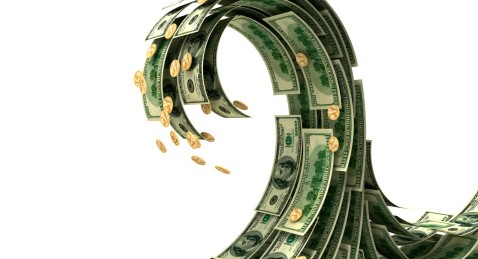editor’s note:– On the eve of the 2015 Currency Conference in beautiful Vancouver Canada, it is our pleasure to present you with an Executive Summary of part two of “The Case for Cash”. Our great thanks to Currency Research for adding this compelling and well researched series of papers to the growing body of work that defines and defends cash as pervasive and necessary permanent payment option.Â
___________________________________________________
 _______________________________________________
Announcing a New Report by Currency Research:
The Case for Cash Part Two: The Justification
The Case for Cash Part One: Myths Dispelled examined and challenged sixteen of the most prevalent myths surrounding the cash world.
In our new report, the Case for Cash Part Two: The Justification, Currency Research (CR) again separates fact from fiction by delving into published research and survey findings to focus positively on why Central Banks should invest in cash and take an active role in supporting and defending the use of cash as a means of payment.
The Report
The Central Bank’s primary role is to support and promote the economic and financial welfare of its country and citizens. Banknotes and coins are key in supporting this role. Cash upholds a Central Bank’s mandate in many ways: by providing a safe, efficient, and trusted means of payment and store of value to citizens, by supporting the monetary independence of the Central Bank, and by acting as a potent and unifying national symbol.
In this report, we examine research from a range of objective sources and discuss the many social and economic benefits of cash in relation to both the Central Bank’s objectives and the stability and confidence of the nation. We argue that these benefits justify the continued Central Bank policy of providing banknotes and coins to the public.
A number of informative graphs and tables, footnotes, and visuals are presented to advance a compelling justification for the Case for Cash.
Benefits of Cash
CR examines the social benefits of cash, including its powerful national symbolism, its role in increasing financial inclusion and preventing social upheaval, its utility in times of crisis, and its safety, security, and anonymity as compared to other payment methods.
We then move on to demonstrate the economic benefits of cash, including its status as a tax that contributes to government revenue and the operational independence of Central Banks, its role in maintaining competition in the payments marketplace, and its efficiency as a payment method when measured in social costs and time.
Recommendations
CR proposes a set of recommendations intended to help Central Banks sustain the social and economic benefits of cash into the future. First, we recommend that Central Banks play a proactive role in the defense of cash and the protection of consumers. We then discuss how Central Banks can greatly benefit from appointing a Cash Product Manager/Director to oversee the Bank’s cash business, and how implementing an active research program can inform planning and policy and maintain financial stability.
The availability of banknotes and coins ensures that a nation’s citizens have an active choice in consumer payments and stored value, especially in the face of false reporting and the card industry’s increasingly aggressive attempts to ‘kill cash.’
Based on sound and objective evidence, the Case for Cash Part Two argues that cash is – and, with the support of Central Banks, will continue to be – efficient, safe, preferred, and economical.











